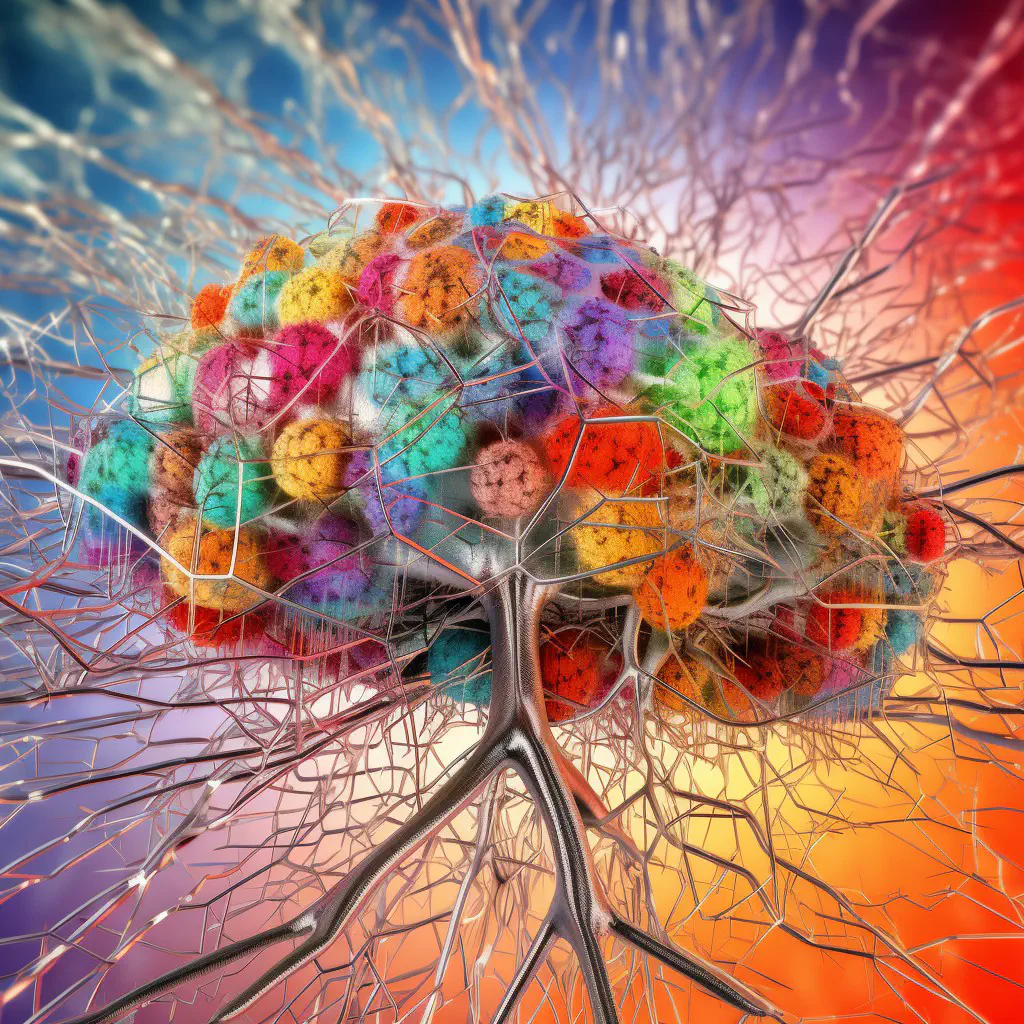
Description
Discover the latest scientific findings on how the brain’s ability to change and adapt can enhance our cognitive and emotional functions. This exclusive article provides an in-depth exploration of the underlying mechanisms of neuroplasticity, shedding light on how our brains can reorganize themselves in response to new situations, experiences, or injuries. Learn about the factors that can influence the plasticity of our brains, from age to genetics to lifestyle, and find out what techniques you can use to enhance your own neuroplasticity. Whether you’re looking to improve your memory, boost your creativity, or overcome mental health issues, understanding the neuroscience of neuroplasticity can be the key to unlocking your brain’s full potential. Don’t miss this opportunity to gain unique insights into one of the most fascinating topics in neuroscience!
Introduction
Neuroplasticity refers to the brain’s ability to reorganize itself by forming new neural connections and altering existing ones, allowing it to adapt and change over time. The study of neuroplasticity has a long history, dating back to the early 20th century when Santiago Ramón y Cajal first described the concept of “neuronal plasticity.” Since then, scientists have made tremendous strides in understanding how the brain changes and adapts.
Studying neuroplasticity is crucial because it has implications for many aspects of our lives, from learning and memory to mental health and recovery from injury. With a better understanding of how neuroplasticity works, we can develop interventions and treatments that can help people improve their cognitive and emotional functions, as well as recover from injury or illness.
In this article, we will explore the latest scientific findings on neuroplasticity, including how it works, the factors that affect it, and the benefits it offers. We will also discuss techniques that can enhance neuroplasticity, such as cognitive-behavioral therapy, mindfulness, exercise, and nutrition. By the end of this article, readers will gain a deeper understanding of the neuroscience behind neuroplasticity and how it can affect their lives.
How Neuroplasticity Works
Neuroplasticity is a term used to describe the brain’s ability to change and adapt in response to various external and internal stimuli. This phenomenon occurs due to the plasticity of neurons, which allows them to form new connections and reorganize existing ones.
Neural pathways and connections
The brain’s neural pathways and connections determine how we think, move, and feel. These pathways are formed through repeated experiences, and the more frequently a pathway is used, the stronger it becomes. When a pathway is not used, it weakens over time. This process is known as “use it or lose it” and is a fundamental mechanism of learning and memory.
Neurotransmitters
Neurotransmitters are chemical messengers that transmit signals between neurons. They play a critical role in neuroplasticity as they are involved in the strengthening and weakening of neural connections. For example, glutamate is a neurotransmitter that is essential for learning and memory. Its release at the synapse reinforces the connection between neurons, which strengthens the pathway.
Synaptic plasticity
Synaptic plasticity is the ability of the synapse, the junction between two neurons, to change in response to activity. This can occur through two mechanisms: long-term potentiation (LTP) and long-term depression (LTD). LTP occurs when the synapse becomes more effective at transmitting signals between neurons, and LTD occurs when the synapse becomes less effective. These processes enable the brain to adapt to new experiences, learn new skills, and store memories.
Overall, the intricate interplay between neural pathways, neurotransmitters, and synaptic plasticity allows for neuroplasticity to occur, enabling the brain to change and adapt throughout our lifespan.
Factors that Affect Neuroplasticity
Neuroplasticity is influenced by various factors, both intrinsic and extrinsic. Understanding these factors can help us enhance our brain’s ability to change and adapt.
Age
Age is a crucial factor that affects neuroplasticity. As we age, our brain’s ability to change decreases. Studies have shown that young brains are more plastic than older brains, implying that it is easier to induce changes in the brain at a younger age. However, research suggests that even in old age, the brain remains capable of changes induced by environmental stimuli, lifestyle interventions, or focused training.
Genetics
Genetics can also influence neuroplasticity. Scientific research has indicated that some genetic variations can affect the production and release of certain neurotransmitters, such as dopamine, affecting the brain’s plasticity. However, it is essential to note that our genes are not entirely deterministic, and environmental factors can also influence gene expression, including genes related to neuroplasticity.
Environment
Our environment plays a significant role in shaping our brain and influencing our neuroplasticity. Environmental enrichment, such as being exposed to various stimuli, living in a stimulating environment, and engaging in social activities, can enhance neuroplasticity throughout life. On the other hand, exposure to chronic stress, trauma, and social isolation can impair neuroplasticity.
Lifestyle
Our lifestyle habits can also impact neuroplasticity. Healthy habits such as exercise, healthy eating, and getting enough sleep can promote neuroplasticity. In contrast, unhealthy habits such as a sedentary lifestyle, a diet high in sugar and saturated fats, and sleep deprivation can impair neuroplasticity.
In conclusion, neuroplasticity is influenced by various factors, including age, genetics, environment, and lifestyle. By understanding these factors, we can make informed decisions that can promote our brain’s ability to change and adapt, leading to better cognitive and emotional outcomes.
Benefits of Neuroplasticity
Neuroplasticity is a remarkable ability of the brain to change and adapt continually. Understanding how this phenomenon works opens up the possibility of harnessing it to our benefit by improving various aspects of our lives. Here are some of the benefits of neuroplasticity:
Improvements in Cognitive Function
Neuroplasticity provides a foundation for cognitive development and learning. When the brain forms neural connections in response to new experiences, it strengthens existing pathways and creates new ones. This strengthening and creation of neural pathways are the basis for learning, memory, and skills acquisition. By enhancing neuroplasticity, we can optimize our cognitive function and improve our ability to learn and retain new information.
Alleviation of Mental Health Disorders
Neuroplasticity also plays a crucial role in treating mental health disorders. By altering neural connections and pathways, it is possible to alleviate symptoms of depression, anxiety, and other mood disorders. Behavioral therapy interventions aimed at increasing neuroplasticity have shown promising results in the treatment of various mental health conditions.
Enhanced Physical Abilities
Neuroplasticity is not limited to cognitive and emotional function but can also enhance physical abilities. For example, athletes can improve their skills and performance by repeatedly engaging in specific physical activities that strengthen relevant neural pathways. Physical therapy relies on principles of neuroplasticity to retrain movements and restore mobility in patients recovering from injuries.
Improved Recovery from Injury
The brain’s ability to reorganize and adapt following injury is crucial for recovery. By promoting neuroplasticity, recovery from brain injury or neurological disorders can be accelerated. Studies have shown that engaging in targeted rehabilitation exercises that promote neural reorganization can improve functional outcomes in stroke and traumatic brain injury patients.
In conclusion, understanding neuroplasticity and its benefits is essential for optimizing overall cognitive and emotional health, as well as physical recovery following injury. Further research in this field holds great potential for breakthrough treatments and interventions that capitalize on the amazing potential of the human brain to evolve, change, and improve.
Techniques for Enhancing Neuroplasticity
There are several techniques individuals can use to enhance neuroplasticity and promote brain health. These techniques can be divided into four categories: cognitive-behavioral therapy (CBT), mindfulness, exercise, and nutrition.
Cognitive Behavioral Therapy (CBT)
CBT is a type of talk therapy that focuses on changing the negative patterns of thinking and behavior that contribute to mental health disorders. CBT has been found to increase neuroplasticity by enhancing connectivity between brain regions, improving cognitive flexibility, and increasing the production of neurotransmitters such as serotonin and dopamine.
Mindfulness
Mindfulness is a technique that involves paying attention to the present moment without judgment. This technique has been found to enhance neuroplasticity by increasing gray matter in regions of the brain associated with attention, emotion regulation, and self-awareness. Mindfulness can be practiced through various methods such as meditation, yoga, or breathing exercises.
Exercise
Exercise has been found to promote neuroplasticity by increasing blood flow to the brain, stimulating the production of brain-derived neurotrophic factor (BDNF), and improving cognitive function. Any type of exercise that elevates heart rate and raises body temperature, such as running, cycling, or swimming, can improve brain function and enhance neuroplasticity.
Nutrition
Good nutrition is essential for promoting brain health and enhancing neuroplasticity. A diet rich in fruits, vegetables, whole grains, and lean proteins can provide the necessary nutrients for brain health. Omega-3 fatty acids found in fish and nuts have been found to promote neuroplasticity by increasing the production of BDNF and improving cognitive function.
Overall, there are several techniques individuals can use to enhance neuroplasticity. By incorporating cognitive-behavioral therapy, mindfulness, exercise, and nutrition into their lifestyle, individuals can promote brain health and improve cognitive function. These techniques can be used together or individually to enhance neuroplasticity and promote well-being.
Conclusion
In conclusion, understanding the science behind neuroplasticity has significant implications for how we approach our physical and mental health. By acknowledging the brain’s remarkable ability to change and adapt throughout our life, we can actively work to enhance our cognitive and emotional functions.
Overall, this article has touched on several important topics related to neuroplasticity. We started by defining the concept and highlighting the long history of research in this field. We then discussed the various factors that can influence neuroplasticity, including age, genetics, environment, and lifestyle. Additionally, we examined how neuroplasticity can lead to numerous benefits such as improvements in cognitive function, alleviation of mental health disorders, enhanced physical abilities, and improved recovery from injury.
Finally, we explored a range of techniques for enhancing neuroplasticity, including cognitive behavior therapy, mindfulness, exercise, and nutrition. These strategies can help increase neural plasticity and ultimately support our overall health and well-being.
Moving forward, it is clear that continued research in the field of neuroplasticity will have a significant impact on our understanding of the brain and how we can improve our lives. By unlocking the secrets of this fascinating process, we can help people of all ages to achieve their full potential and lead happier, healthier lives.


